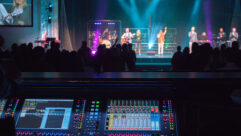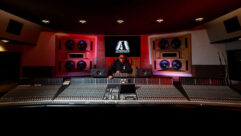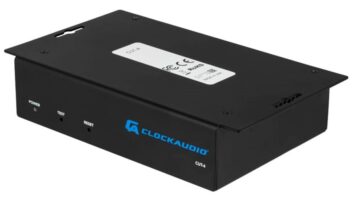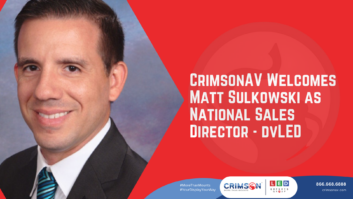The perennially touring
is at it again. The five-time Grammy winner is in the midst of the Born This Way Ball tour, a seemingly endless succession of dates that will hit virtually every corner of the globe for more than a year—or longer. The elaborately gothic-inspired production was birthed in Seoul, Korea, in April of 2012 and has received glowing reviews (“the best live show you will see this year,” per the UK Sun newspaper) and was honored as Major Tour of the Year at the Pollstar Concert Industry Awards.
is again at the helm of the production, coordinating multiple universal stadium systems that at times are air-freighted with the stage set, leapfrogging across several continents to meet the tour.
“Each tour system is comprised of two
SD7 Mach III systems at FOH outfitted with Waves and two Waves servers, with one running on a UPS for redundancy,” explains Eighth Day Chief Technology Officer Jason Kirschnick. “A 192kHz DiGiCo SD Rack at FOH is loaded with 32 analog ins/32 analog outs, as well as 24 AES ins/outs for local I/O. At the stage end for FOH are two more 192 SD racks loaded with 48 analog ins, eight AES ins, eight AES and eight analog outs. We are deploying an Optocore switcher so there are three fiber loops for FOH—one loop of all three racks for FOH is connected to a Route 66 Optocore fiber router device. The primary console is in a loop with the two respective engines to the Route 66 as well as the second SD7 at FOH in a loop with the Route 66. This enables us with a push of one button to move the entire rack loop between the two FOH consoles for support acts and dual redundancy. At the monitor end is another SD7 running two Waves 9 servers (with one running on a UPS). There are two more 192kHz SD Racks at monitors loaded with 48 analog, eight digital inputs, 40 analog and eight digital outputs each.”
The PA system is d&b audiotechnik, comprised of 96 d&B J Series made up of a combination of J8 and J12s (4 x hangs; 24 boxes deep), 32 d&B Flow J subs (4 x hangs of 8 deep), 48 d&B B2 subs on the ground (stacked on each side of the stage and along the front of the stage), 12 d&B Q7 front fills (spread across the front of the stage), with a stadium delay system consisting of 4 x hangs of 12 d&B V8 and V12s. [pictured: Chris Rabold FOH with Eighth Day Sound Chief Technology Officer/Project Manager, Jason Kirschnick]
“The system is all-digital at 96kHz,” adds Kirschnick, “with a complete analog backup comprised of Dolby Lakes and LM44s with wireless control of the complete system. The d&B amplifiers are all monitored and controlled remotely through the entire system as well.”
The five-piece band consists of bass, two guitars, a sizable drum kit and a lot of stereo bass and keyboard elements, plus a programmer who supplies various stems. There are 70-some inputs at FOH, including talkbacks and audience mics and Lady Gaga’s various headset and handheld mics.
“I came onboard between legs of the tour,” explains Chris Rabold, whose previous gigs include stints with Beyoncé, The Fray and Widespread Panic. “I knew I’d only have a couple days of rehearsal before the first show so I went ahead and put a plan into effect that would ensure that I’d be as close to show-ready as I could be once we hit Bulgaria, the site of the first show on the second leg of the tour. I spec’d an SD7 for me at FOH above all else for its sonic quality. It has a million and one great features but at the end of the day, it’s the sound of the desk and the sound of my mixes through the desk that matter the most. The DiGiCo consoles simply sound better than anything else out there. There are several strong platforms in the digital console realm, but this is the one. Period. [pictured: FOH Tech/Recording Engineer Wayne Bacon; FOH Engineer, Chris Rabold; Systems Engineer, Mike “Stacker” Hackman]
“I built the console offline on my computer and sent the file to the guys at Eighth Day, who prepped the desk. From there I was able to get on the console in Los Angeles for a few days, where I worked with the tour programmer on some tracks. The desk then bounced back to the Eighth Day shop in Cleveland where I worked some more on it, concentrating on some of the finer details with routing, system integration, etc. By the time we made it to load-in, I had a basic gain structure in hand, my EQs were at a decent starting point, I had a good idea of what dynamic processing I needed, snapshots written for each song, effects laid out… Basically every last detail was in place before I even saw the band—and this was on a show with a pretty sizable number of inputs. All of the work I was able to do beforehand was absolutely invaluable.”
Rabold cites the flexibility of the snapshot section as one of the main features of the desk that aids in his daily workflow. “With a big pop show like this that is scripted very carefully, the goal is consistency and more or less perfection every single night. I don’t think we’ll ever get the perfection part of that equation down, but we can sure get the consistency through the use of snapshots. The SD7 is so much more configurable than other platforms. You can tweak it snapshot by snapshot, not just globally across all snapshots because automation is and isn’t recall safe. This is tremendously helpful and keeps you from being tied to an all-or-nothing kind of mindset. For example, if I know I want to handle a bass guitar input in the traditional sense and just EQ on the fly for a few numbers, I can do that. But if I also know that by snapshot 17 I want it to have a very specific sort of treatment, I can have it where the recall safe feature comes off and suddenly that input is recalling precisely what had been written previously. It really allows you to be flexible when you need to be and by-the-book-exact when you want to go that route, all on a per-song basis.”
Asked about outboard gear, he says he’s using a combination of outboard and onboard plug-ins. “I basically use some of the same analog things I’ve used on and off for years on certain inputs just because I know they work for me. Lead vocal and drums see the outboard devices. I use the console’s onboard complements of EQ, effects and dynamics for the real nuts-and-bolts work. The overwhelming majority of the inputs see nothing but onboard processing. As far as plug-ins go, I try to use the Waves server more as an effects device. I pull a lot of delays and specialty things from there and it’s definitely a crucial part of the mix structure. I use C6s on the playback stems. A lot of times tracks can be overly bright or overly boomy for what really works live. These allow me to reshape certain frequency ranges yet keep the overall feel and intent of the tracks in place. These are my go-to problem solvers for playback stems in the live pop world. I use the Super Tap delays and H Delays as well. They sound great and can be synced to a song’s BPM. Both of these are very flexible with how you can color them and how you can manipulate individual left and right sides of a stereo delay. Very cool. I use an L2 limiter on the output of a two-track mix as well. This is very handy when I know a board mix might be taken from the night and then played back by the artist right next to fully mastered album mixes. I want my mixes to sound competitively loud with anything they might be referenced to. You never know. Little stuff like that can go a long way toward keeping everyone happy.”
Rabold says he multitracks nightly, mainly just for virtual soundchecking and to tweak his mixes during downtime. “When time permits, I can play back a show and tweak things in the mix. I do rely on this ability and have for several years now. Soundchecking in an empty room can be pointless. Listening to a mix with nearfields or headphones that have a response that you’re familiar with can be way more helpful when it comes to listening critically and judging what’s needed in a mix. We go standard MADI out of the desk and convert that to optical MADI via an RME MADI Bridge. From there the signal goes into SSL Delta-Links, where it is converted to HD so that we can record to Pro Tools. Pro Tools 9 is running on a MacPro with a ridiculous amount of memory due to the staggering track count. Because there are so many tracks and because we’re recording at 96kHz, we split the audio files across three SSD drives.”
Ramon Morales, who’s mixed monitors previously for Beyoncé as well as other A-list artists including Destiny’s Child, Mariah Carey, Mary J Blige and Pitbull, handles monitors for the band members, all of whom are on Sennheiser 2000 series IEM systems (with JH Audio JH16 custom in-ears), as well as the audio techs. He oversees a total of 12 stereo mixes, flown side fills, bass and drum subs, two mono mixes (for drum subs and thumpers on bass and drums) and several stereo FX sends. [pictured: Monitor Engineer, Ramon Morales; Audio Crew, Lee-Fox-Furnel; Audio Crew Chief/Monitor, Tech Klocker]
“Everything about the console is great,” he enthuses. “Sonically, it’s one of the best consoles out there and definitely my favorite. I can have as many ins and outs as I need or want, and having the backup console mirrored—as well as all the other features it has—what else would you want? I’ve found the Macro feature to be very useful. We’ve set many of them up to do specific things for the show and no matter where I am on the console, I can access what I need on the macro section without having to scroll through aux sends or layers and banks. Our show intercom system is also routed through the monitor console, so the techs that need show comms in their mix can have it and plenty of talkback mics using the macros.
“I’m also using many of the built-in effects including Waves to add different colors to the mix. My favorite has to be the SSL channel and the C4, which I mainly use for my vocal inputs, since the console itself sounds great. I just use them to enhance what is already there. The only outboard gear we’re using is a TC Electronics 6000 reverb system for a vocal verb. It’s a Gold Plate and one of my favorites for vocals; it’s very smooth and cuts through just enough to hear it and not overpower anything else going on in the mix. I also use it for a drum verb.”
The console’s ability to receive a video feed aids both Morales and Rabold in managing the spontaneous stage antics of the mercurial artist. “This is crucial when mixing monitors from under the stage,” says Morales, “and having limited sightlines. Having a program feed straight into the console really helps.”
“I barely even look at the stage now,” adds Rabold. “This especially comes in handy when I have to watch for the moments where she yanks off her headset mic and goes for the handheld. There’s no cue for that and being able to see it on a screen two feet in front of my face sure beats trying to see what she’s doing 150 feet away across a sea of fans!”
A great deal of time and planning was invested prior to launching the multiple systems in the field, to ensure the production ran as smoothly as possible with no margin of error. “I personally spent weeks researching and testing the fiber loops and to failsafe the redundancy on as many things as possible,” Kirschnick reflects. “I did this research and testing at our shop in Cleveland, and a great deal of time was spent making sure everything was running smoothly weeks before the tour embarked on its first show last spring. And now, with over six months of time logged with the systems in the field, the band and crew think the console and sound system sound incredible and unmatched.”
Eighth Day tour crew:
Chris Rabold: Foh Engineer
Ramon Morales: Monitor Engineer
Dan Klocker: Audio Crew Chief / Monitor Tech
Wayne Bacon: Audio Crew
Christopher Bellamy: Audio Crew
Bill Flugan: RF Tech
Lee Fox-Furnell: Audio Crew
Mike “Stacker” Hackman: Systems Engineer
James La Marca: Show Coms / Audio Tech
Matt Strakis: Audio Crew










